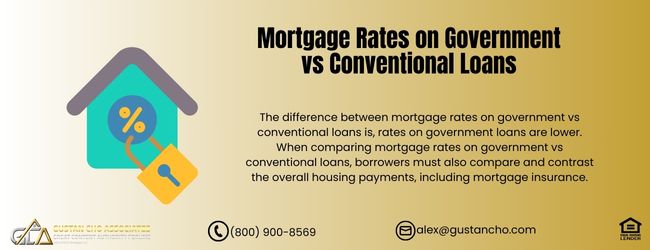Manual Underwriting Guidelines on FHA and VA Loans

This guide covers manual underwriting guidelines on FHA and VA loans. Manual underwriting guidelines on FHA and VA loans are almost identical. VA and FHA loans are the nation’s only two mortgage loan programs that allow manual underwriting on owner-occupant primary residency mortgage loans. HUD, the parent of FHA, is the federal government agency administering FHA loans. Alex Carlucci of GCA FORUMS Mortgage Group is an expert in manual underwriting guidelines on VA and FHA loans. Here is what Alex Carlucci said about FHA and VA manual underwriting guidelines.
The Veterans Administration and the U.S. Department of Housing and Urban Development aim to insure VA and FHA loans if borrowers default on these two government-backed loans.
Private lenders are the financial institutions that originate, process, underwrite, fund, and service VA and FHA loans. After the VA and FHA loan funds, lenders sell VA and FHA loans on the secondary market. Fannie Mae and Freddie Mac are the two mortgage giants in keeping liquidity in the housing markets in the United States. The following paragraphs will cover the manual underwriting guidelines on FHA and VA loans.
Manual Underwriting Guidelines on FHA and VA Loans
The three government-backed mortgage loans in the nation are FHA, VA, and USDA loans. Due to the government guarantee, lenders aggressively originate and fund FHA, VA, and USDA loans at little to no down payment, lenient mortgage guidelines, at competitive rates. Fannie and Freddie are government-sponsored enterprises (GSEs). They are the two largest purchasers of mortgage-backed securities in the nation.
The role of Fannie Mae and Freddie Mac is to keep liquidity in the mortgage markets. Fannie Mae and Freddie Mac will only purchase conforming mortgage loans.
Any government agency does not back conventional loans. However, lenders originating conventional loans plan on selling the conventional loans they fund to Fannie Mae to Freddie Mac. Fannie Mae and Freddie Mac only purchase mortgage loans that conform to their agency mortgage guidelines. Lenders do not do manual underwriting on conventional loans. Only FHA and VA loans allow for manual underwriting. The following sections cover manual underwriting guidelines on FHA and VA loans. Click here to qualify for FHA and VA Loans
Differences Between Manual Underwriting Guidelines on FHA and VA Loans
Statistics prove veterans have lower credit profiles than civilians. This is because veterans get transferred every so many years. Veterans also have a difficult time paying bills on time during deployment. According to Dustin Dumestre of GCA FORUMS Mortgage Group, VA loans has lenient manual underwriting guidelines on FHA and VA loans. Here is what Mike Gracz of GCA FORUMS Mortgage Group says about manual underwriting guidelines on FHA and VA loans:
VA manual underwriting guidelines require 12 months timely payments on all monthly debt payments to qualify for VA loans. HUD require timely payments for the past 24 months on all monthly debt payments on FHA loans.
VA loans have lenient mortgage guidelines compared to FHA loans. The waiting period after foreclosure, deed-in-lieu of foreclosure, or short is two years versus three years on FHA loans. However, statistics show fewer VA loans default than FHA loans, even with lower credit standards on VA loans.
What is The Role of Fannie Mae and Freddie Mac
The role of Fannie Mae and Freddie Mac is to keep liquidity in the housing markets by providing liquidity for mortgage bankers. How do Fannie Mae and Freddie Mac provide liquidity for the mortgage market? Fannie Mae and Freddie Mac are the two mortgage giants in the United States.
By buying funded loans from private lenders, lenders can pay down the warehouse lines of credit they use to fund the government and conventional loans. By replenishing the lender’s warehouse line of credit, lenders can repeat the mortgage origination process and make money. Due to the liquidity, lenders can keep originating and funding loans at competitive rates.
However, manual underwriting guidelines on VA loans are more lenient on VA home loans versus FHA loans. The Veterans Administration is the federal agency responsible for creating the agency mortgage guidelines on VA loans. VA loans are one of the three government-backed mortgage loan programs in the United States.
Compensating Factors on Manual Underwriting Guidelines on FHA and VA Loans
Manual underwriting guidelines cap maximum front-end and back-end debt-to-income ratio cap based on the number of compensating factors. Both HUD nor the Veterans Administration are not lenders. These two giant government agencies are the government agencies administering VA and FHA loans. Manual Underwriting Guidelines on FHA and VA loans are the same concerning timely payments and front-end and back-end DTI.
Manual Underwriting Guidelines on FHA and VA Loans: Debt-To-Income Ratios
The maximum front-end debt-to-income ratio is 31%, and the back-end is 43% on manual underwrites on FHA and VA loans with no compensating factors. More so on VA loans. Mortgage underwriters can exceed the recommended debt-to-income ratio manual underwriting guidelines on FHA and VA loans if they see strong compensating factors and extenuating circumstances. The maximum front-end debt-to-income ratio is 37%, and the back-end DTI is 47% with one compensating factor. The debt-to-income ratio increases to 40% front-end and 50% back-end with two compensating factors on FHA and VA loans. Mortgage underwriters have a lot of underwriters discretion on manual underwrites on FHA and VA loans. Click here to qualify for mortgage loan with low credit scores
Frequently Asked Questions on Manual Underwriting Guidelines on FHA and VA Loans
The information below contains guidelines on the approval of Federal Housing Administration (FHA) loans and Veterans Administration (VA) loans. This section may also assist the borrower by clarifying a few criteria that pertain to manual underwriting guidelines on FHA and VA loans.
Manual Underwriting Guidelines on FHA and VA Loans?
Answer:
- Some lenders use manual underwriting in underwriting services when an application does not comply with the automated underwriting process.
- This process entails a more stringent analysis of the borrower’s finances, including the credit report, income, and any other information that relates to repayment ability.
In Which Circumstances Is Manually Underwriting Guidelines on FHA and VA Loans Required?
Answer:
- Manual underwriting is normally needed when the borrower has a much lower score (credit score is usually below 580 for FHA) and presents derogative remarks (such as recent bill collections or charge-offs).
- The DTI limit exceeds the usually prescribed limits.
- The borrower must have the requisite credit history that is acceptable for automated underwriting.
What is the Minimal Credit Score Required by Law?
Answer:
- For FHA, the minimum score required is commonly set at 580 to qualify for a 3.5% down payment.
- Equities with a score of between 500 and 579, equity, and a 10% down payment may qualify.
- Manual underwriting will, however, be more frequent.
- As for VA loans, the VA does not set a minimum credit score.
- Lenders hardly ever go below 620 during manual underwriting.
Positive features that justification the loans lent and the ones that would otherwise not suffer are compensating factors that induce the borrower in these scenarios:
Such factors include:
- Cash reserves.
- Long employment and income records.
- Payments made in high amounts.
- Total income to debt ratio from different levels terce holding low debts.
Answer: Earned incomes are considered in the four employment lists for elderly household respondents researched. This includes:
- Pay stubs and W-2 forms for salaried employees.
- I am filling Tax returns for self-employed individuals.
- Present income papers plus records of denial returns that are made surely include incomes such as probation and probationary allowances.
How Do Collections and Charge-Offs Impact the Eligibility Criteria?
Answer:
- Collections and charge-offs do affect credit scores.
- However, such guidelines are more relaxed regarding FHA and VA requirements.
- FHA loans do not make plans for collections of less than $2,000, while bigger collections will be put in a repayment plan.
- For VA loans, borrowers are generally not turned down due to old collections or charge-offs.
- Still, the big picture, including all the borrowers’ debt and income, has to make sense.
What Documents Are Necessary for Manual Underwriting Guidelines on FHA and VA Loans?
Answer: Common documentation includes:
- Proof of income ( pay stubs, tax returns).
- Bank statements for asset verification.
- Borrower’s credit report.
- Information related to debts, including payments, how much, and when.
What Exactly is Residual Income, and How Does It relate to VA Loans?
Answer: Residual income is the amount a person has left after paying their monthly obligations.
- In extending VA loans, lenders pay attention to residual income as that helps determine whether the borrower has enough left for consumption.
- This is an important consideration that gives more reliability than credit scores or DTI ratios.
Is it Possible for Someone With a Bankruptcy Discharge or Foreclosure to Have a Chance to Qualify?
Answer: Yes, borrowers can get FHA or VA loans even if they have gone through Chapter 13 bankruptcy or foreclosures, but there are waiting periods:
- According to FHA guidelines, a two-year wait period must be observed after a Chapter 7 bankruptcy.
- In contrast, the waiting period after a foreclosure is three years.
- This is standard practice.
- The policies on these loans state that normally, two years must lapse from the time of debt discharge or property repossession due to a loan default whenever the subject can reestablish credit.
- Knowing how to approach FHA and VA manual underwriters will help borrowers appropriately prepare for a mortgage application.
- Factors compensating for income attitude, documentation, and eligibility will make the application successful even when circumstances are abnormal.
This guide on manual underwriting on FHA and VA loans was written and updated on October 2nd, 2024.






Responses